READY TO GET STARTED?
REQUEST A FREE ESTIMATE
Fill out the form below or call (855) 789-9807 for a free, no-obligation estimate.
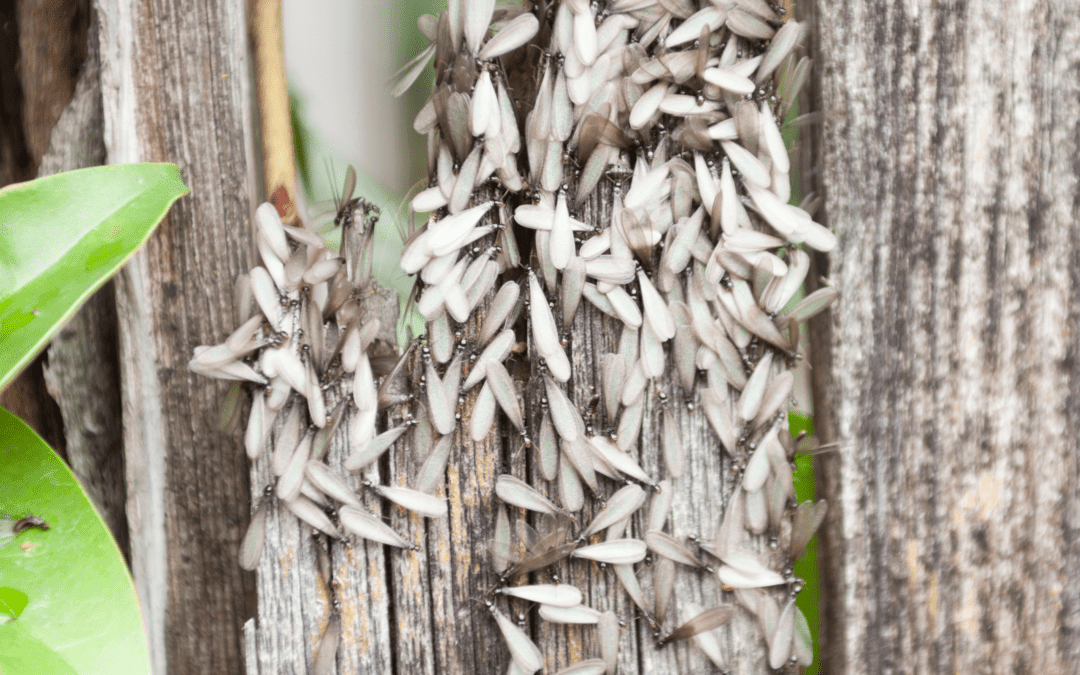
For most homeowners, including those in Bonita Springs, the first sign of a termite infestation is seeing a swarm of flying insects. Not all swarming insects are termites though – some can be flying ants. Let’s break down the physical characteristics to determine the differences between the two.
There are three easy ways to tell flying ants and termites apart:
These two pests also have behavioral differences. They both live in large colonies with designated levels of caste systems. Termites can also be found in decaying trees, stumps, wood debris, lumber, and wooden structures. Some ants, like carpenter ants, inhabit wood, but most other species do not. Unlike ants, termites can cause major structural damage since they eat wood, and ants do not.
They also have different life cycles. Ants go through four stages of development, while termites only have three. During the warm months of swarming season, the fertile winged ants and termites fly from their nests to mate and establish new colonies, making it more difficult to tell the difference between the two pests.
If you believe you have termites causing damage to your home, reach out to your local Bonita Springs pest control company, who can provide a free inspection and a service plan that is right for you and your property.

Hot, humid weather is inevitable when you live in the Fort Lauderdale area. Unfortunately, pests like termites thrive in these conditions, looking to our homes for a food source. Termites will eat wood inside out, sometimes going undetected for a long period of time. Some common termite species include drywood termites and subterranean termites. To enhance termite control around your home, it’s important for every homeowner to utilize preventative measures throughout their property.
Improper drainage is one of the most common reasons termites infest. Subterranean termites are looking for moist wood to infest, causing significant structural damage. Our gutters often clog, causing water to pool and create insulation vulnerable to termites. Likewise, the leaves, twigs, and debris can get caught and build up in gutters, softening your roof and causing it to rot. Divert your down-spout away from your home and consider utilizing splash blocks to prevent pooling water.
Showing off your beautiful landscaping and a green, lush yard is ideal for every homeowner. Unfortunately, the materials we sometimes use to create this can be beneficial to termites. Landscaping mulch can be aesthetically pleasing, but unfortunately, it can attract termites into our homes. Try to minimize your use of mulch but if you do utilize it, keep it away from your foundation by at least 15 inches.
Excessive moisture can cause multiple problems for your home, including termites. Leaking pipes or lack of airflow can create an ideal environment for these pests. A major step in preventing termites is eliminating excessive moisture inside the home. Enclosing your crawlspace is a great way to not only prevent termites and other pests, but to also improve the overall health of your home.
If you’ve taken as many precautions as possible to avoid termites but are still looking for extra protection, consider reaching out to your local Fort Lauderdale pest control company. These professionals can provide you with a termite inspection and a treatment and prevention plan customized to your home.
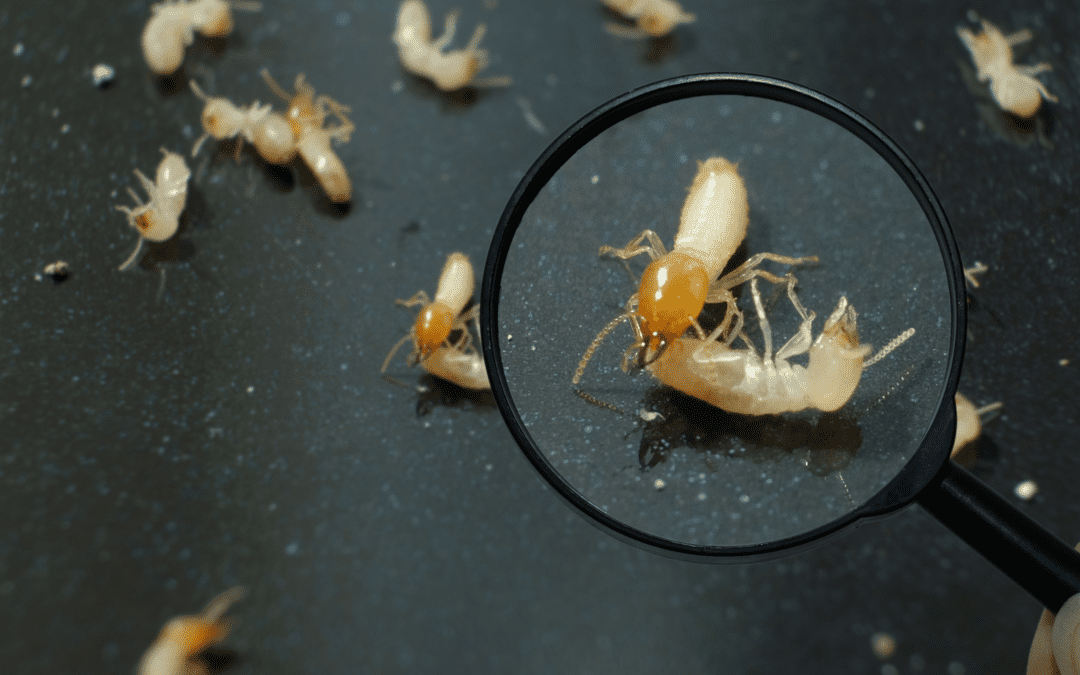
Drywood termites seek dry wood as a food source and will destroy your home in the process. These termites differ from other species, such as subterranean termites, since they tend to create their colonies in wood, instead of in the ground, and need little moisture to survive. Unlike other species, these termites can create devasting damage to homes, excavating wood and ruining it. To prevent them, it’s best to place preventative measures throughout your property.
The first step in preventing drywood termites is inspecting your home. By examining your home, you can get a good idea of what repairs are needed or discover that a termite infestation has established. When inspecting, write down everything you see that’s a concern; this will help overall when relaying to a pest professional. When checking the home’s interior, don’t forget to check in darker areas such as your crawl space, attic, and basements. Check around your baseboards, beams, or other wood materials. Likewise, look at any furniture or firewood inside the home too. As you are investigating the exterior of your home, be extra thorough, as these termites haven’t entered the home yet. Check your foundation, old trees, wooden sheds, and firewood.
Drywood termites are very small, ranging from 3/8 to ½ inch in length, allowing them to fit in the smallest hole or gap. If you find any openings leading into your home, it’s best to repair them immediately. Likewise, keeping your home’s attic and crawlspace well ventilated will help reduce moisture and the risk of a termite infestation. Consider encapsulating your crawlspace or insulating your attic.
Drywood termites are looking for any wood materials to inhabit. Make sure you place firewood at least 20 feet away from the home and raise it off the ground. Additionally, trim all shrubs, bushes, or other dense greenery so that it doesn’t touch the side of your home. If you have old trees, lumber, or tree stumps, consider removing them so these pests don’t infest and make their way inside your home.
Sometimes all the prevention in the world can’t stop termites from infesting homes. If a termite infestation has occurred, it’s best to call your local South Florida pest control company for extra help. A termite professional will provide you with a thorough termite inspection, a termite control plan based on your home’s needs, and recommendations on preventing them in the future.

Did you know that termites can cause extensive damage that can compromise the integrity of your home’s structure? Most homeowners insurance policies do not cover damage caused by termites or other pests. It’s imperative to have a termite control system in place for your Pompano Beach home, ensuring you and your family don’t have to worry about future damage. Let’s go over the many different types of termite treatments that will keep your home safe from structural damage!
A no-tent termite treatment is an excellent alternative to tent fumigation and can make treating your home for drywood termites a much easier process. This service addresses the unique behaviors of South Florida’s drywood termite species. Drywood termites create colonies in wood, with no connection to the ground necessary. They also need very little moisture and are often found in attic trusses, fascia boards, and soffit areas.
The benefits of “no tent” treatments are:
This termite service is best used when subterranean termites are the problem. It is an environmentally-friendly solution that involves placing green bait stations along the exterior perimeter of your home. The bait system doesn’t allow termites to molt, grow, or develop correctly, resulting in the total elimination of a termite colony. This baiting system helps to control subterranean termites, including the Formosan and Asian subterranean termite species.
Benefits of termite bait systems include:
Another way to combat subterranean termites is with liquid defense. This solution has proven to work in the most challenging situations, climates, and environments to eliminate subterranean colonies. This effective treatment requires a trench to be dug around the foundation perimeter, and then a termiticide is injected in proper intervals. It doesn’t kill the termites immediately but gives them time to bring it all the way back to the queen, ultimately eliminating the entire colony.
Benefits of liquid termite defense:
If you notice termite damage in or around your home or property, it’s best to contact your local Pompano Beach pest control company. They will be able to professionally assist you with your needs and find the best termite solution for you and your home.

Whether you’re a new homeowner or have lived in your home for years, dealing with a termite infestation can be devastating for all. Unfortunately, termite damage can be costly to repair and not covered by homeowners’ insurance policies. Before termites have taken over your home, it’s important to know the basics of termite signs and treatments.
Termites are considered silent destroyers, infesting for long periods without homeowners knowing. However, several factors can indicate you have a termite infestation that you can be on the lookout for. Termites will create tunnels or tiny pin holes while feeding on wood. If you notice your home’s wood buckling or wall paint bubbling, termites are already feeding on your house.
A noticeable indication is finding discarded wings around your window and door frames. This is a sign that termites are already inside the home. Likewise, if you start seeing their droppings, also known as “frass”, you have termite activity. Seeing frass is an indication that the drywood termite species has infested. Frass is pellet-shaped and brown, sometimes it can get mistaken for wood dust or shavings.
There are several treatment and prevention options for termite control. Homeowners can choose from three common types of professional treatments offered.
Consider contacting your local Naples pest control company, who can provide a comprehensive inspection and help determine the best plan for you, your family, and your home.
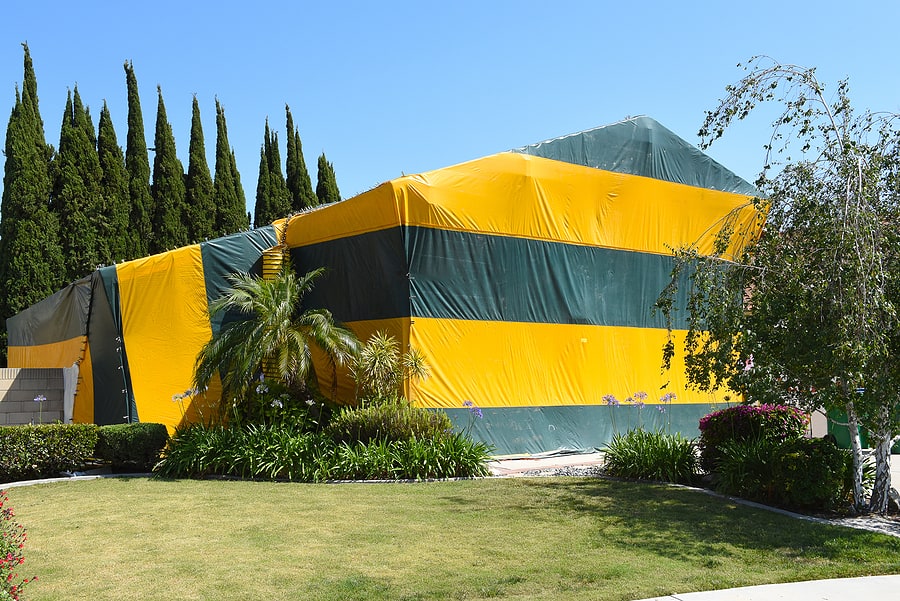
Hot and humid, South Florida is the perfect habitat for termites! These pests cause significant damage to our homes and cost us millions in repairs, making them one of the most feared insects by homeowners. Knowing how to tell if your house has termites is the first step in eliminating them or being on top of preventing them.
Since Florida hosts a variety of climates, there are many species found in our state. In South Florida, the two most common termites found are drywood and Formosan (subterranean) termites. Drywood termites are known to inhabit sound wood, often infesting wood furniture. Formosan or subterranean termites need soil to live and create mud tubes to look for a food source above the surface, invading the foundation of homes.
We know that all termites are attracted to wood, but each species has their preference. Subterranean termites aren’t as picky about the type of wood and will eat the most common types found in homes, such as pine and oak. However, drywood termites prefer to avoid soil and will eat hardwood floors or wood found in your home’s structural framing.
Firewood and mulch are two major attractants to termites and provide an entry point inside a home. When storing firewood, make sure it is at least 20 feet away from the home’s foundation. Mulch can retain moisture, making it essential to keep it at least 18 inches away from your foundation.
Having unnecessary moisture around the home can create conditions beneficial to termites. Eliminating excess moisture inside and outside is essential in preventing termites. Make sure your yard is dry by sealing any leaks, repairing AC units, and regularly cleaning gutters to divert rainwater away. Consider enclosing your crawlspace to reduce moisture, decrease humidity, and prevent mold and wood rot.
There are several signs that a homeowner can look out for when determining a termite infestation, including:
If you suspect that you have termites in your home, contact your local South Florida pest control company. These professionals will inspect your home and provide a termite treatment and prevention plan.
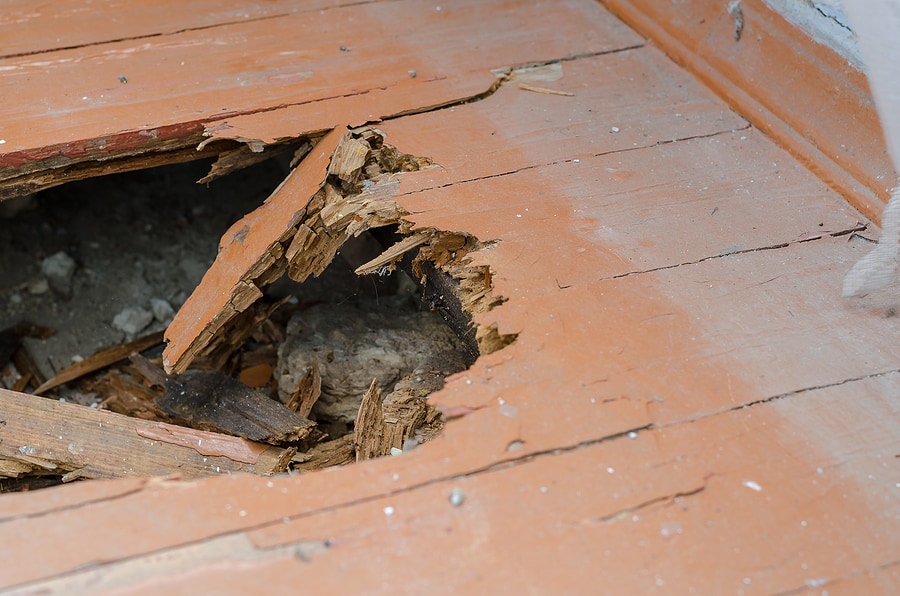
Subterranean termites are considered to be the most damaging species of termite of all. These termites can damage the infrastructure of buildings and homes, putting them at risk for catastrophic consequences. Subterranean termites are found in every US state except Alaska.
It can be hard to detect subterranean termites as they eat wood from the inside out, often staying hidden until significant damage is done. They can enter through stucco, slab foundation, or any other hidden area with access to the structure. In order to prevent termites, it’s important to recognize the signs you may have an infestation. Here are 6 signs of subterranean termites:
One of the earliest signs of subterranean termites are termite swarms. Termite swarms emerge in the spring or early summer to reproduce and establish new colonies. Seeing a termite swarm indicates the presence of a nearby colony and indicate another colony will be starting up soon, increasing your risk of an infestation inside your home.
Mud tubes are another indication of subterranean termites. These are tubes they build to travel back and forth between your home and their nest. They protect them from damage and predators and allow them to accumulate moisture which termites need to survive. Mud tubes are typically about the size of a pencil and can be on walls, ceilings, floors, exterior surfaces, and on the sides of slabs.
Termites don’t just leave visual clues to their presence – you can also hear them! If a colony is larger and established, you may hear a faint clicking or knocking sound behind your walls or in other voids. The noise is the sound of soldier termites banging their heads against wood or vibrating their bodies to indicate danger is imminent. You can even sometimes hear the worker termites chewing through the wood of your home.
During an annual termite inspection, a termite control technician may tap the wooden surfaces of your home. If termite damage is present, you will hear a hollow or paper sound instead of a solid thud when tapped. You can also look for blistering or bubbling paint or other abnormalities in or near wood structures, including window and door trim. Termite damage can often mimic water damage.
When subterranean termites tunnel through wood, they push debris and waste out behind them through tiny openings. Frass is the name for this waste they excrete. If you notice pin-sized holes with small black marks or dark powdery substance around them, these indicate the presence of kick out holes made by the termites. You may also see piles of sawdust looking material which is the frass.
Floor, door, and window damage may also indicate a termite infestation. Sagging floors can indicate a well established infestation. Take note of any floors that buckle or sag and have them inspected. Doors and windows are another area that may indicate a problem. When these structures warp or don’t open and close smoothly, it can indicate the presence of termites, as well.
If you have any of these signs of termite damage, contact your local pest control company for a thorough inspection and treatment plan.
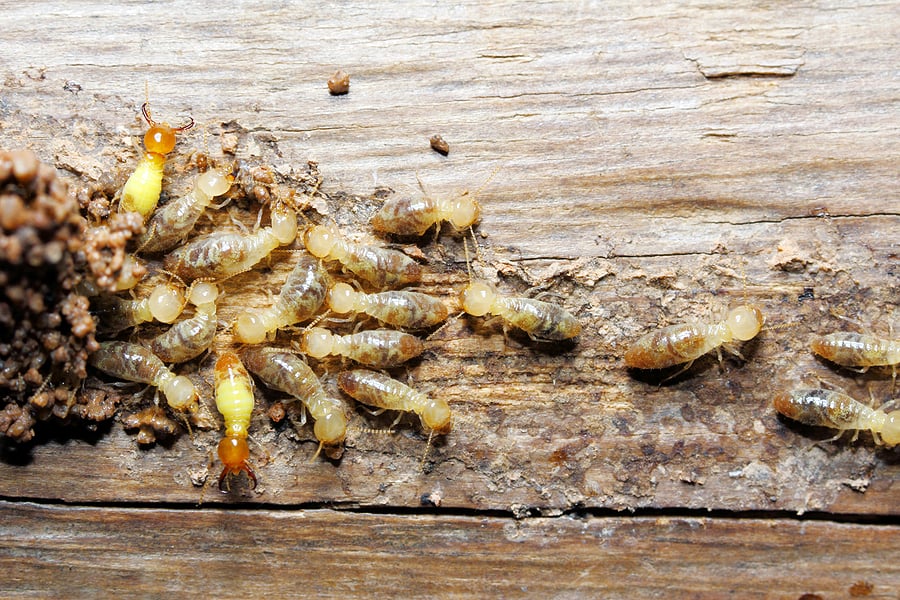
Termites cause serious and severe damage to homes, destroying the structure and integrity. The damage termites cause can be very expensive to repair, making it essential for every homeowner to recognize termite types and the prevention methods for each.
There are two main termite species in the South Florida area that can pose a major threat to your home, subterranean and drywood termites. Subterranean termites typically swarm in the spring but have been known to swarm at any time of the year. These termites live in colonies underground but will go above ground to retrieve food by building tunnels called mud tubes. In order to survive, they need moisture. You can find these termites in baseboards, inside crawl spaces, wooden beams, and more.
Drywood termites are social insects that also live in colonies. However, they create their colonies in wood, with no needed connection to the ground. While subterranean termites need moisture, drywood termites do not. You can find these termites in furniture, banisters, hardwood floors, and more.
Taking the time to place do-it-yourself preventative measures throughout your home is a great way to get a head start on termite control. You can prevent termites by:
If you suspect you have a termite problem or want to get ahead of termite control, contact our local office for termite control near you, who can provide you with a free termite inspection.

Termites are considered a year-round pest, causing significant destruction to homes and properties each year. Termite swarming season runs from spring to summer for most species. They use this time to reproduce and establish new colonies. Keep your home safe from termites this summer with these termite prevention tips.
Termite inspections aren’t limited to just your house. Make sure to inspect any wooden structures you have outside, as well, like wood furniture, swing sets, and decks. Termites will make small pinholes in the wood they are eating. If you find evidence of termites in your wooden structures, contact a termite control professional immediately. If your structures are not infested, seal them with an outdoor paint or sealant.
Installing a barrier to entry for termites will go a long way towards keeping them out of your home for good. There are two termite treatment options available for the perimeter of your home: bait stations and liquid soil treatments. In addition to these, performing routine inspections of the outside of your home, especially around foundations, is critical. If any gaps or cracks are found, seal or repair them immediately.
Stacks of firewood are an ideal food source for termites. Try not to stack firewood next to your home, shed or garage. Instead, store it several feet away from these structures. You should also elevate it, if possible, on either metal or concrete racks.
It’s important to keep your yard maintained to help prevent termites and other pests. Keep bushes and trees trimmed back so they are not touching your house or overhanging. Remove any dead or dying shrubs from your yard. Try to avoid using wooden mulch; instead, opt for recycled rubber mulch.
Termites don’t take days off so your home is always at risk. They can also go undetected for long periods of time, causing significant damage before you even realize they are there. A pest control professional can perform an annual termite inspection to help spot any signs of termites before they turn into a full blown termite infestation.
If you have a problem with termites or just want to get a head start on prevention, contact your local pest control company for a complete evaluation.
Why Do I Have Ants in My Kitchen?